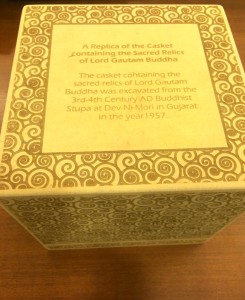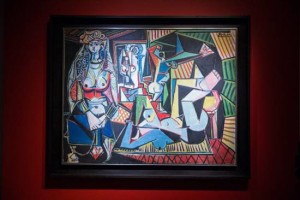
RBI, Deputy Governor, S S Mundra says, “according to census 2011, out of 24.67 crore households in the country, only about 14.48 crore or 58.70 % households had access to banking services. Further, of the 16.78 crore rural households, only about 9.14 crore or 54.46 % households were availing of banking services.”
“The World Bank Findex Survey (2012) points out that only about 35% of Indian adults had access to a formal bank account and a meager 8% borrowed formally in the last 12 months,” says Mundra.
Historically even Lord Curzon vexed by the bureaucratic Indian Banks observed, “In respect of banking it seems we are behind the times. We are like some old fashioned sailing ship, divided by solid wooden bulkheads into separate and cumbersome compartments.”
In 1960, the State Banks of India was given control of eight state-associated banks under the State Bank of India (Subsidiary Banks) Act, 1959. These are now called its associate banks. In 1969 the Indian Government nationalized 14 major private banks. In 1980, 6 more private banks were nationalised. These nationalised banks are the majority of lenders in the Indian economy. They dominate the banking sector because of their large size and widespread networks.
My request to India’s finance Minister is that when Indira Gandhi nationalized the banks and the Insurance Companies, it was for the purpose of ‘Garibi Hatao’ or the reduction of poverty, for the masses and the proletariat. If this is the property of the poor, then the time has come to return their property back to them. We now have the technology, microfinance systems and means; to finally bankroll the biggest financing and banking endeavor at an individual digital level. Do the greatest good by unleashing the power of the citizens, for the long term improvement, of the largest proletariat, of poor citizens in our history. Divest all the banks and lend all the money back to the poor and the needy, and let them decide what entrepreneurship they want to follow, to improve their lives. Human ingenuity knows no bound and unleashing its potential, is the greatest duty of its government.
The government has long tried its hand at Banking, Insurance and Finance, and it is time now for the people to learn and use what is theirs. Electronic banking can spread to the most remote digitally identified persons, who can borrow small loans, to take up a livelihood or trade. Whether it is the soon to be millions of urban poor, or the needs of the largely disguised unemployed in the rural sector, this money has been put in trust, for their use. This trust can now be upheld and the minister can prove himself trustworthy by disinvesting all these banks and insurance companies, and investing the proceeds in the modern schemes; of direct deposits, and microloans for over five hundred million citizens.
By husbanding this wealth in government hands, and not to let lose its benefits on the people who need it the most today, would be foolhardy and make little economic sense, or policy. The policy should be the greatest good at the fastest pace, and in the most efficient manner possible, for and by the people. It is time for the people to rise, and for the government to stand aside, and let it happen. The government can be a facilitator, but not the creator of wealth. The wealth belongs to the people, and they have first right on how to use it. We have the old socialists’ leftist parties in the opposition clinging on to an idea whose time has come and gone. The model of the Government being the “Ma Baap” of its citizen, crumbled with the Berlin wall, and China’s affirmation that it is glorious to be rich.
While my example talks only of Banking and Finance the whole communication revolution of digitized media is going to be the greatest enabler for India’s citizens. As the Minister for Information & Broadcasting it helps, as the digital revolution of providing information, and enabling broadcasting; is the base, for any digitally enabled economy. The example can be safely extended to Railways, Highways, Industry, Commerce and other areas where the government has no business being in any longer, and they should be allowed to grow on their own. The greatest fire sale in India, of its so called Public Enterprises; will go a long way in enabling the current government, to meets its new investment and developmental goals.
The goals for the country are economic and financial equality like the Nordic nations rumored to be amongst the happiest in the world. All the people’s money should now be invested in health, education, housing and infrastructure with the government as an investor and enabler. The people will grow the wealth, as they alone know how to do it. Given the knowledge and technology of the modern world, seamless digital transactions; will allow for the raising from poverty, of India’s masses. Just like China has achieved in the past decades, India can also continue to have a double digit growth for decades. Only India’s policy and methodology should not be central controlled, but pass to a million points of light. It is the people’s land and they will husband it and grow it, and make it fruitful, and you are only a custodian; of their wishes.
Sell everything that is publicly held, and convert that into the greatest private investment in the world. To lend a $ 1,000 to five hundred million people you only need fifty billion dollars. A Keynesian behemoth of spending, of this this size; by depositing these sums directly into individual accounts, will transform India for ever. The thing is that it does not have to be done all at once and can be spread out over decades. These private investments will grow well over the rate of inflation, given the growth potential, of the young population. This initial seed money, can grow exponentially over the century; to truly make India, into what it can be as an economic power.
For centuries the villages of India have been treated as the forgotten masses. For all the talk precious little was achieved in raising financial inclusion through education or technology. Now a simple mobile phone can become the vehicle of mass inclusion. Numerous new finance organizations in existence in Africa and elsewhere can now provide a loan within an hour to deserving candidates. A unique identifier for each citizen coupled with this new credit will allow each one to prosper, at his or her own pace. The multiplier effect of this mass infusion of capital; into a largely landless labor, will have a very beneficial impact, on the gross domestic product. Consumption will rise, and demand will go up; in an economically beneficial and ever expanding spiral.
At the same time the privatization of public enterprises, will allow for further innovation and improvements, in the disinvested large corporations; who will be free to grow, and become more efficient and better corporations. Foreign investments will pour in, as the diaspora and its friends learn of the new economic miracle, about to be unleashed in human potential. The direct growth in consumer consumption will allow for more expansion of the economy. For double digit growth we need transformation of the current finacial, insurance, mining, industrial and logistics, into a modern infrastructure built by the best engineering talent, and not bureaucrats living out their tenure. We can grow the talent as we have so much youth, and need to invest in them and not for them. You are the guardian of a great wealth, and as per the doctrine of parmo dharma, it is best to invest in the citizens, whose karma will make the new India.
Let me explain what will happen. Rural individuals engaged in agriculture will be able to buy their seeds, fertilizer, agricultural implements and sell their produce directly, without any middlemen taking their share of the profits, and making the systems inefficient. Those not actively engaged directly in agriculture, will be able to enter into trading, or providing services, required elsewhere. These will be the hidden labor that will become available to make the modern India. The industrial workers and the builders of the infrastructure and cities will come from these individually enabled citizens. Development needs great sacrifices and discipline and the government should provide better governance, defense and law and order. Get out of the people’s business, while it is still time, and let people live in a just and free society, or face a future of their unfulfilled dreams.
Pradhan Mantri Jan Dhan Yojana is only a small step in this direction and there is a lot of work to be done, to make a secure digital transaction system using mobile. This has not been tried before on the scale that India requires, but that is the beauty of new technology, which is easily scalable. A lot of it can be free funded by advertising, from the consumer goods and technology giants, which will help fund this new revolution. As money flows to the poorest of the poor, we will all benefit, for financial inclusion is the only way forward.


